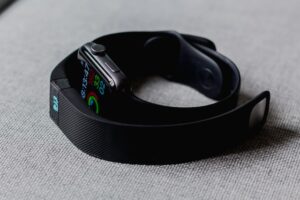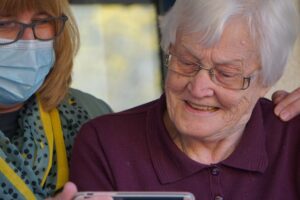Page Contents
As technology continues to advance, it has become increasingly integrated into various aspects of our lives, especially in the aspect of senior care. The use of smart technology and gadgets has significantly improved the quality of life for older adults, providing them with greater independence, safety, and overall well-being.
In this article, we will explore some of the innovative technologies and gadgets that are transforming the way we care for seniors at home for now and the future.
Smart technology and smart home systems
Smart home systems are revolutionizing senior care by creating a connected environment that enhances safety, convenience, and comfort. These systems include voice-activated assistants, such as Amazon Echo or Google Home, that can perform tasks like setting reminders, making calls, and controlling other smart devices. Smart home systems also offer features like smart door locks, motion sensors, and security cameras, providing peace of mind for seniors , caregivers, and their families.
Wearable devices
Wearable devices have gained popularity among seniors as they offer a range of health and safety benefits. Fitness trackers, smartwatches, and medical alert systems are some examples of wearable technology that can continuously and remotely monitor vital signs, track physical activity, and detect falls. These devices can alert caregivers or emergency services in case of an accident, ensuring quick response during emergency.

Medication management systems
Seniors often have complex medication regimens, and managing multiple medications can be challenging. Medication management systems, such as automated pill dispensers or smartphone apps, can help seniors take their medications correctly and on time. These systems provide reminders, dispense the right dose at scheduled intervals, and even notify caregivers if doses are missed.
Telehealth and remote monitoring
Telehealth has emerged as a valuable tool for remote healthcare delivery, especially for seniors who may have difficulty visiting healthcare providers in person or staying in rural areas. Through video calls and remote monitoring devices, doctors can remotely assess seniors’ health, provide medical advice, and monitor chronic conditions. Remote monitoring devices can measure vital signs, such as blood pressure and blood glucose levels, and transmit the data to healthcare professionals for quick analysis.

Home safety and fall detection
Falls are a major concern for seniors, often leading to serious injuries and hospitalisations. Home safety technology and fall detection systems help mitigate these risks. Smart flooring with pressure sensors can detect falls and send alerts to caregivers or emergency services. Other technologies, like bed and chair alarms or wearable fall detection devices, can automatically detect falls and trigger an emergency response.
Cognitive stimulation and social engagement
Technology can also support seniors’ cognitive function and provide social engagement opportunities. Brain-training apps and games can help stimulate memory, problem-solving skills, and overall cognitive abilities. Social media platforms and video chat applications enable seniors to connect with loved ones, reducing feelings of isolation and loneliness.

Conclusion
The integration of home care technology and gadgets is transforming the way we provide care for seniors. These innovations enhance safety, improve health monitoring, and promote independence and social engagement. However, it’s important to consider individual needs, preferences, and the learning curve associated with using these technologies. Caregivers and family members should provide support and guidance to ensure seniors can benefit fully from these advancements. By embracing home care technology, we can enhance the quality of life for older adults and enable them to age in place comfortably and safely.
